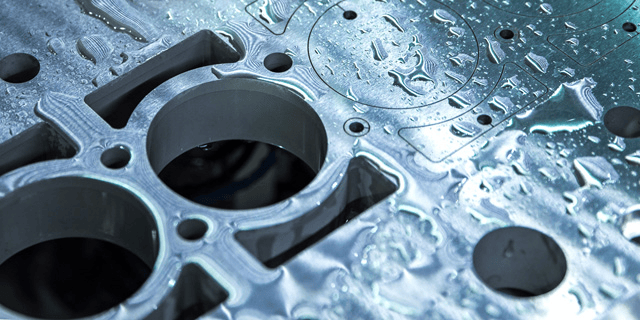The manufacturing process of parts can leave residues such as lubricants, metal shavings, and dust when stamped parts come out of the press. These contaminants can affect the performance of the parts, so they must be removed before sending the parts for secondary operations (such as metal finishing or welding) or directly to the production line.
Metal stampers often provide a range of cleaning services internally, but they may require other approved suppliers to perform highly specialized cleaning services. In some cases, multiple cleaning operations may be necessary, whether after stamping or metal finishing, to ensure optimal functionality.
One of the most critical operations during part manufacturing is preparing the formed metal parts for finishing operations. Whether the part undergoes electroplating, painting, chrome plating, or electrostatic coating, the quality of the final finish depends on the effort put into cleaning the part appropriately to ensure compatibility with the finishing process. Automakers have implemented strict testing programs to evaluate the effectiveness of cleaning methods for stamped parts, both after cleaning and after processes such as welding, priming, and painting.
Precision Part Cleaning Options
The two most commonly used cleaning processes for precision parts are degreasing and passivation, as outlined below. Processes involving the removal of metal, such as electropolishing and deburring, are covered in separate articles.
Degreasing: Water or Steam Degreasing
Passivation: Citric Acid, Nitric Acid
Water and Steam Degreasing
How It Works
There are two main degreasing methods for precision parts: water degreasing and steam degreasing.
Advantages
Degreasing has become more environmentally friendly, as less toxic solvents can be used, and oils can be distilled and treated. Steam degreasing works for a wide variety of metals, including stainless steel, galvanized steel, aluminum, copper, and bronze. It is suitable for delicate stamped parts that cannot be tumbled or require more intensive cleaning, such as medical device components. Water degreasing is appropriate for parts stamped with water-soluble lubricants.
Passivation
How It Works
Passivation involves immersing stamped metal parts in a nitric or citric acid bath to remove free iron and other contaminants introduced during the stamping process. After treatment, the parts are rinsed and dried, forming a chromium oxide film that provides corrosion resistance and can enhance sterilization. Passivation does not alter the appearance of the part.
Advantages
Passivation is suitable for large quantities of parts requiring rust protection, although it does not provide the same smooth appearance or corrosion resistance as electropolishing. It is primarily used for stainless steel parts, although titanium and other metals may also undergo passivation. However, some metals, such as aluminum, copper, and carbon steel, cannot tolerate certain acids.
Choosing the Right Precision Part Cleaning Method
Selecting the right cleaning process requires understanding the type of metal material, the strength or brittleness of the stamped part, its size, the required cleanliness, and the type of metal surface treatment after stamping. Furthermore, many manufacturers adhere to environmental standards that restrict the use of certain cleaning solvents. Metal stamping engineers can offer guidance on cleaning and finishing options that are most effective for stamped part specifications and comply with industry quality standards.

 Hot News
Hot News2024-11-29
2024-11-29
2024-11-29
2024-11-29